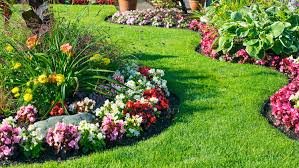Creating a beautiful and functional garden is both an art and a science. Garden design involves more than just planting flowers and shrubs; it’s about crafting an outdoor space that harmoniously blends aesthetics with practicality. Whether you’re a seasoned horticulturist or a novice gardener, understanding the principles of garden design can transform your outdoor space into a serene retreat.
In this comprehensive guide, we’ll explore the intricacies of plant selection and care, helping you master the art of garden design.
Table OF Contents
The Role of Plant Selection
Choosing the Right Plants for Your Climate
One of the most crucial aspects of garden design is selecting plants that thrive in your specific climate. Research your USDA Hardiness Zone to determine which plants are best suited for your area. For example, if you live in a region with hot summers and mild winters, drought-tolerant plants like succulents and lavender might be ideal choices.
Understanding Soil Types
Soil type plays a significant role in plant health. Conduct a soil test to determine whether your soil is sandy, clayey, or loamy. Each type has different drainage and nutrient properties. For instance, sandy soil drains quickly and may require more frequent watering, while clayey soil retains moisture but can become compacted.
Designing with Themes
Consider the overall design theme of your garden. Whether you prefer a formal, structured layout or a wild, naturalistic approach, your plant selection should reflect this theme. For a formal garden, choose symmetrical plantings and topiary shapes. For a more relaxed feel, opt for a mix of native plants and wildflowers.
Plant Care Essentials
Watering Techniques
Proper watering is essential for plant health. Most plants prefer deep, infrequent watering rather than shallow, frequent watering. This encourages deep root growth and makes plants more drought-resistant. Consider installing a drip irrigation system for efficient water delivery directly to the roots.
Fertilizing
Fertilizing provides plants with essential nutrients they need to grow. Use organic fertilizers like compost or fish emulsion to enrich the soil without harmful chemicals. Be mindful of the specific nutrient requirements of your plants—some may require more nitrogen, while others need more phosphorus or potassium.
Pruning Practices
Pruning helps to shape plants, remove dead or diseased wood, and promote healthy growth. Different plants require different pruning techniques and timings. For example, roses benefit from annual pruning in late winter, while perennials may only need occasional deadheading.
Creating Focal Points
Using Plants for Visual Interest
Focal points draw the eye and create visual interest in a garden. Use unique and striking plants, such as ornamental grasses or flowering shrubs, to create these focal points. Placing a specimen plant at the end of a pathway or in the center of a flowerbed can anchor your design.
Incorporating Structures
In addition to plants, incorporating garden structures like arbors, trellises, or water features can serve as focal points. These elements add height, texture, and a sense of permanence to your garden design.
Seasonal Plantings
Design your garden to have focal points throughout the year by choosing plants that bloom in different seasons. This ensures that your garden remains vibrant and interesting throughout the changing seasons.
Sustainability in Garden Design
Eco-Friendly Plant Choices
Sustainability is an essential consideration in modern garden design. Choose native plants that require less water and are adapted to your local environment. This reduces the need for pesticides and fertilizers, promoting a healthier ecosystem.
Low-Maintenance Options
Design your garden with low-maintenance plants to reduce upkeep. Perennials, evergreens, and ground covers are excellent choices for a garden that looks beautiful with minimal effort.
Mulching and Composting
Using mulch, like premium brown mulch in Salt Lake City, helps retain soil moisture, suppress weeds, and improve soil health. Composting organic waste reduces landfill use and provides a rich, nutrient-dense soil amendment for your garden.
Conclusion
Mastering the art of garden design involves a thoughtful approach to plant selection and care. By understanding your climate, soil type, and design theme, you can create a stunning garden that is both beautiful and functional. Embrace sustainable practices to ensure your garden thrives for years to come.
Share your own garden design and plant care tips in the comments below. Let’s grow a community of gardening enthusiasts who inspire and learn from each other.

